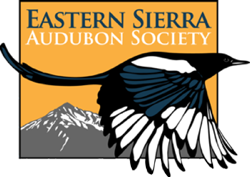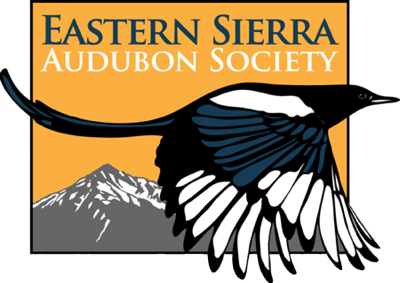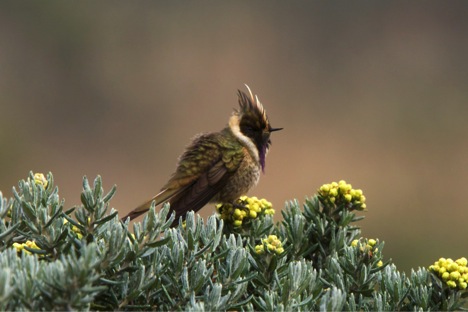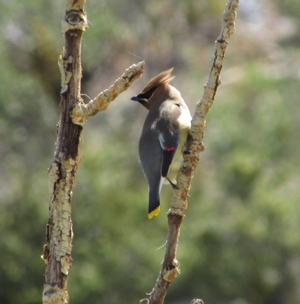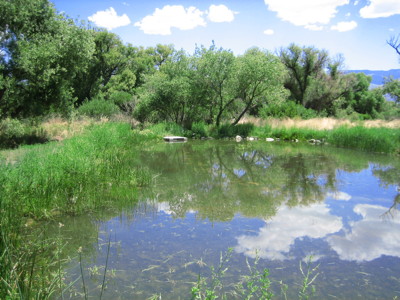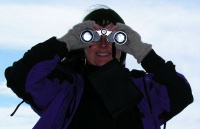Becoming a Better Birder
An admirable characteristic in many people is striving to be better…to do a better job every day at one task or project. We often see this in our friends as they have grown in their birding abilities. Although we all have more to learn than we have already learned, we each have come a long way in gaining knowledge about birds. We often think of our many mistakes in our early birding days with feelings of embarrassment as well as amusement. We all continue to make mistakes but each mistake is a lesson waiting to be learned–yet another way to get better–and we all do want to get better.
One area of birding that helps all birders to identify birds more effectively is a comprehensive understanding of status and distribution. So what does that mean? Status is simply, what is the bird doing here? Is it a breeder, just migrating through, visiting in the winter, visiting in the summer, it resides here, or is it a vagrant and isn't "supposed" to be here? Distribution is when it is expected to be here and where geographically. As an example, most flycatchers, vireos, warblers, etc. depart our area in the fall and we don't expect to see them in the winter. BUT, the only Thick-billed Kingbird ever recorded in Inyo County wintered in Lone Pine in freezing temperatures. Credit goes to teenager Mark Stacy when he saw the bird in Lone Pine in December, recognized it as what he saw when he was in Arizona in spring, and got the word out on this amazing vagrant. All because he knew the status and distribution of this species, which is NOT FOUND in Inyo County in any season! He quickly drew a very recognizable image of the bird and wrote up a description because that is what you do when you find a vagrant! So soon, so smart was he!!
Mark didn't yet own a camera so he did the next best thing, but the best thing is to get images of the bird. Today almost everybody has a cell phone or a pocket-sized camera and a few people even carry around camera cannons. Whatever you have, take a photo! Take a bunch of photos! They need not be magazine cover quality! Blurred and distant may be good enough to eliminate all other possibilities. A picture or two can reduce your description from a thousand words, which we all know is what a picture is worth! If your cell phone battery is dead and you forgot to replace your camera battery, begin writing a description immediately, if not sooner! Time IS of the essence! Details disappear along with the seconds. We would suggest you call all the local birders, but your phone battery is dead so write some more! If you think you have a vagrant, PROVE IT!!
If you aren't sure what you are looking at, or you think it might be "just" a rare species, treat it as though it is a pterodactyl! Besides, we all need practice in writing descriptions! The first rule is to write a description BEFORE you open a book. The human brain is an amazing organ and is designed to gather information and make a decision. If you look at a book before you write, the brain will blend what you saw in the field with what you saw in the book and what you write will not be what you saw…even though you are absolutely and totally positive that it is. This isn't about you…it's about your amazing brain! After you write everything you remember about the bird (size, shape, colors and where, bill size, shape and color, behavior, vocalizations, etc.) then open the book and see what most closely matches your image. Usually other similar species will be on the same page or very nearby and see if any birds fit better. Once you think you might have the bird, look at the map. Is it found here? If the answer is yes, you might be in the ballpark and circling the bases! If the answer is no, turn a few more pages in front of and behind where you were. It might be a close relative that looks similar. If you think you have a rare bird, you must eliminate all other species with which it might be confused. And this is why you wrote the description first. Maybe the wingbars are different…did you describe them in detail? Maybe the legs are a different color…did you describe them in detail? Maybe the wings are longer than the tail…did you describe that detail? Maybe the bill is slightly decurved…did you described that detail? Now you know why they say, "The devil is in the details!" If you took images, you can follow the same procedure to find the answer in your field guide.
If you have been birding for a few years, you are as familiar with many of the species as you are with the un-feathered friends you've known for a few years. Then one day you look at a bird that is somewhat familiar but something isn't right. Take a few images right away then go back to looking at it, preferably with binocs, and look for details. What doesn't seem right? What species does it remind you of? After you finish looking at it, or more likely after it flies away, dive into your field guide and follow the above procedure. As an example, in the Eastern Sierra we commonly have House Finches at our feeders and most birders know them like very old friends. But they can be quite variable. Some are bright red, some paler red, some orange, some yellow, and some just streaky medium brown. Some have molted and show fresh feathers and others haven't started yet and are wearing old, worn-out, shaggy feathers. Some are young of the year and their wingbars don't look anything like the older birds. The more you look, the more differences you'll see. Some will have tumors, others a leucistic feather or two, and others with a missing foot. So although there is a generic image of a House Finch, there are only a few who look exactly like that image. But your bird is similar to but not quite a House Finch. The other look-alike options are Cassin's Finch and Purple Finch. What is the status and distribution for each species? Yup, we're back to that again! One is regularly found in Inyo County and the other is very seldomly seen and usually in fall. One is a fantastic find and the other is just a really, really pretty bird…if it is a male! If the bird is a male, your chances are much better that you can solve the problem. If it is a female or a young bird, your chances are dropping like change out of a torn pocket. Hopefully the description you wrote, or the image you took, includes the differing characteristics of these finches such as, the distribution of red (if it is a male), bill shape, streaking on the undertail coverts (yes or no), streaking on the sides (distinct or blurred), eyebrow color, etc. and maybe you heard vocalizations. Cassin's Finch is regular on the east slope of the Sierra Nevada and breeds in the coniferous forests with a few birds recorded at low elevations in the winter. Purple Finch is extremely rare and should be posted on Eastern Sierra Birds with photos, description, date/time, and directions to where the observation was made. Many friends, old and new and not yet met, will really appreciate your efforts. And you can feel the warm glow that makes you smile when you know that you were a little better today than yesterday.
By Tom & Jo Heindel
Return to Top
